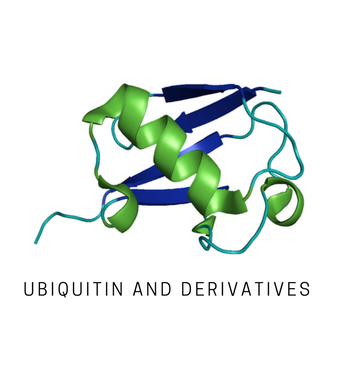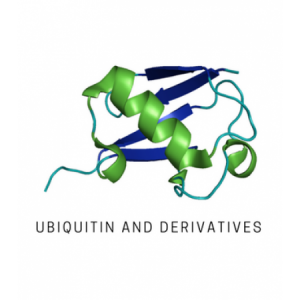Specifications
K63 chains traditionally play a role in intracellular signaling, trafficking, and autophagy. The topology of this linkage and its apparent role in cellular processes are quite different from that of K48. Poly-Ub chains of this type appear to play a role in endocytic trafficking, DNA repair, neurodegeneration and more. K63 ubiquitin is formed via an isopeptide bond between Lysine 63 and the C-terminal Glycine. This linkage takes place onto other ubiquitin monomers and are then enzymatically linked from specific UPS enzymes. Once the K63 Tetra Ubiquitin has been formed we then biotinylate it once on one available site on the ubiquitin chain. This biotin then acts as a means of detection via streptavidin or vidin. The applications are numerous from Western Blots to ELISAs. Testing can vary based off intended application (EX: DUB activity/specificity).
Info
| Species | Human |
| Source | E. coli |
| Tag | Biotin |
| Molecular Weight | 34759 Da (depending on degree of phosphorylation) |
| Quantity | Variable |
| Concentration | Variable |
| Formulation | 20 mM Tris pH 7.5, 150 mM NaCl |
| Storage | -80°C, avoid freeze/thaw cycles |



Reviews
There are no reviews yet.